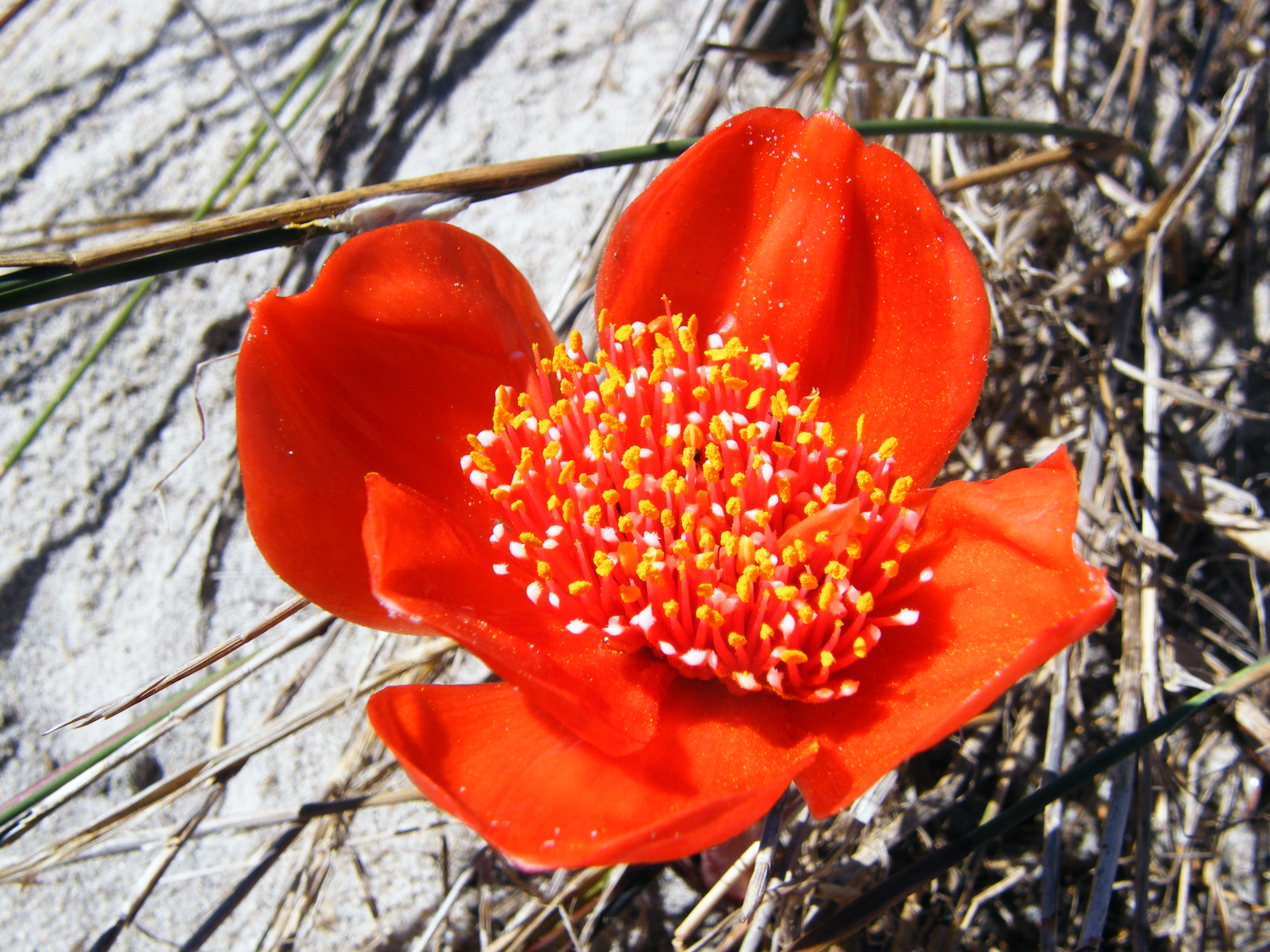Haemanthus pubescens
(Haemanthus pubescens)

Description
Haemanthus pubescens ('pubescens': Latin 'having a soft downy covering') is an endemic South African bulbous geophyte in the genus Haemanthus. The plant was first described by Linnaeus in 1781, 19 years after his description of H. coccineus. Both species are common along the West Coast and it is puzzling that H. pubescens was not collected and described much earlier. The genus Haemanthus was created in 1753 by Linnaeus. In 1838 the eccentric Constantine Samuel Rafinesque, placed H. pubescens in a new genus Leucodesmis, H. coccineus in Perihema, and H. carneus in Serena. The troubled English botanist Richard Anthony Salisbury (1761-1829) in his 1866 posthumous publication 'Genera of Plants', placed H. amarylloides under Melicho and H. albiflos under Diacles. H. pubescens occurs at elevations up to 300 m from Cape Town northwards along the coast to southern Namibia. Formerly it was known only from the south western Cape, but collections from north of the Olifants River into Namibia, led to a revision of its geographic limits. The 4-7 large, fleshy spathe valves are diagnostic of the species. The two leaves are broad, flat on the ground and usually pubescent. Bulbs are deep, with fleshy distichous tunics.
Taxonomic tree:







